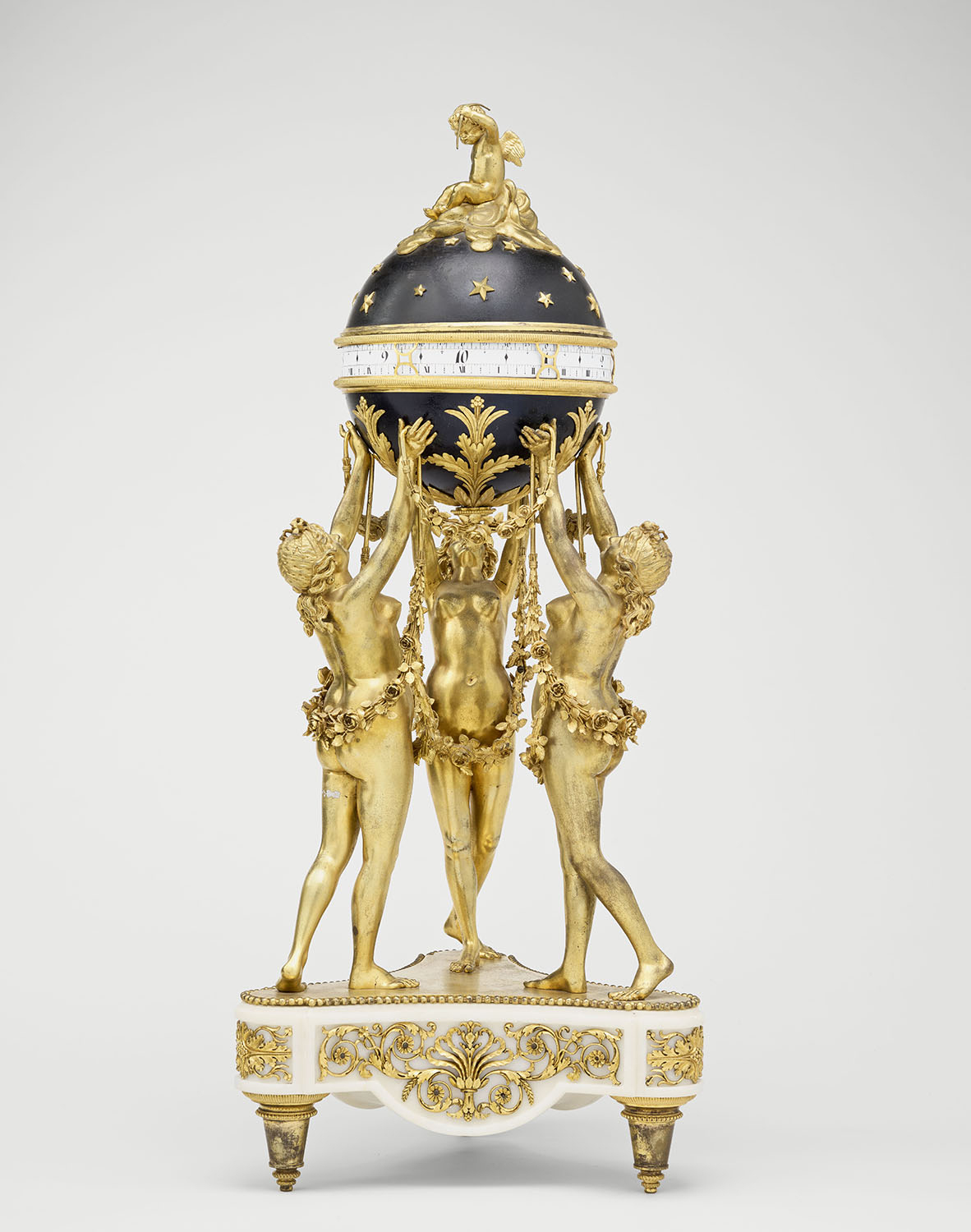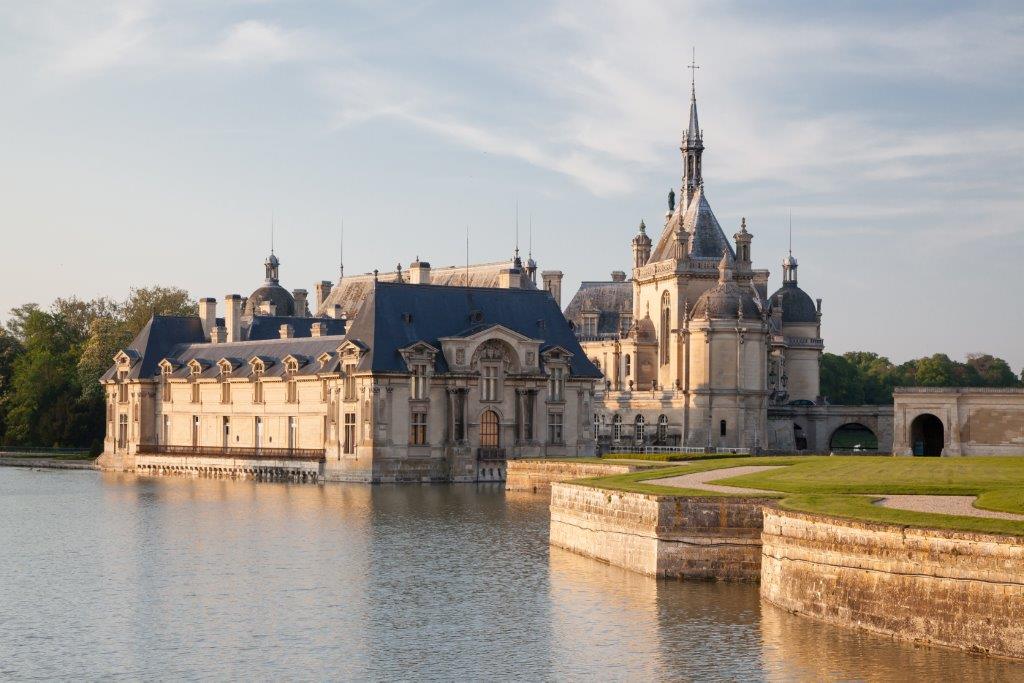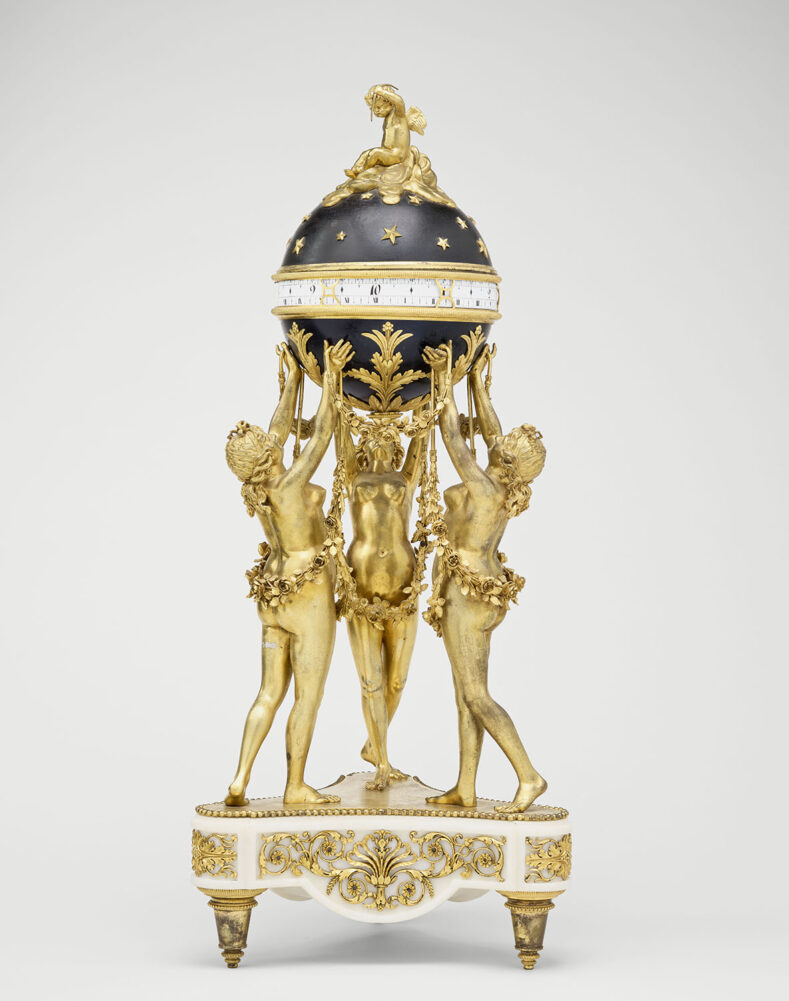Three Graces Clock
- Localisation : The Violet Room
- Année de création :Circa 1775
- Artiste :Anonymous
Description
The Three Graces clock is probably one of the Condé Museum’s most famous timepieces. The mechanism is contained in a celestial sphere supported by three Graces standing on a triangular white marble base. Triangular in form, with rounded angles, this base is adorned with delicate openwork gilt-bronze. The Three Graces, all identical, support themselves on their right legs, with their left legs lifted slightly to the rear. They support the sphere with their raised arms, and their heads, adorned with a ribbon, are tilted slightly backwards. Large garlands of roses and leaves hang from their hands. The sphere is made of painted tole adorned with gilt-bronze elements: stars in the upper hemisphere and a cloud crowned with a cupid shooting an arrow (which has disappeared) from his bow. On the lower hemisphere, ribbed leaves frame six stems adorned with flowers. Between the two hemispheres, a mobile enamel dial is bordered by two gilt-bronze cords. A fixed black arrow indicates the passing hours.
The model for this clock was invented by François Vion around 1765 (a model that belonged to Madame du Barry): Vion is said to have drawn inspiration from a clock featuring the three Graces by Falconet, held at the Louvre Museum. The model was quite popular in the 19th century. The clock in the Condé Museum may date from the period when France was governed by the Directory.






















